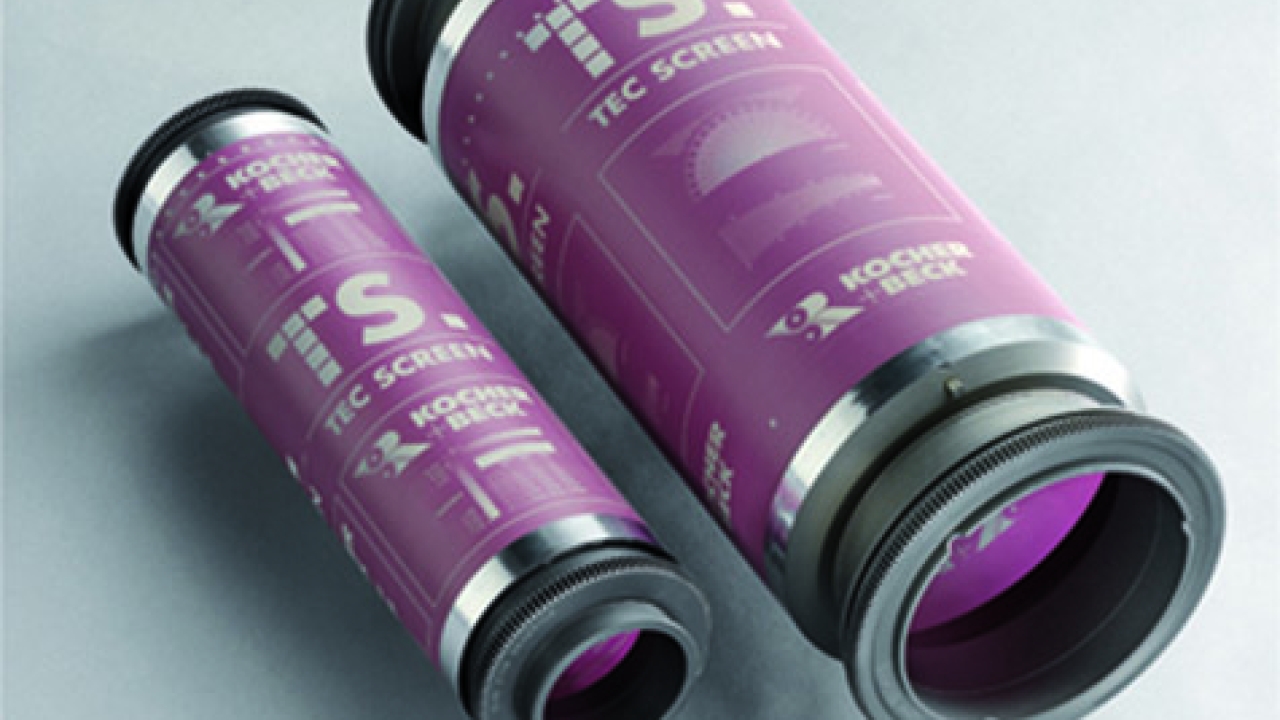Screen time

Kocher + Beck has extended its narrow web rotary tooling range with the supply of rotary screen plates. Andy Thomas reports
Narrow web rotary tooling specialist Kocher + Beck has launched its own screen printing plate system, which it calls TecScreen.
John Fehrenbacher, TecScreen product manager at Kocher + Beck, says the company was simply extending its ‘very precise knowledge’ of the requirements of narrow web converters for quick availability and cost‐effective purchasing of high‐quality tools. ‘This knowledge has been effectively implemented for the development and production of TecScreen. The large number of customers who already successfully use TecScreen confirm this,’ says Fehrenbacher.
Despite the development of more opaque UV flexo whites, and the increasing use of gravure units, rotary UV screen remains the principal method of laying down an opaque white undercoat on clear filmic substrates. Virtually all label printing machines for narrow web in the market today are equipped with rotary screen printing units, irrespective of the manufacturer, or can at least be retrofitted with such units. This trend is now moving rapidly into label markets in ‘developing’ economies. Screen printing is particularly important in the design of cosmetics and beverage labels, but also finds applications in fields as diverse as Braille printing and hazard symbols.
‘With printers under time and cost pressures, the task of effectively manufacturing the stencil for screen printing promptly and cost‐effectively is becoming ever more important,’ says John Fehrenbacher. ‘This is where we thought we could make a big difference.’
The TecScreen screen printing plate is manufactured at Kocher + Beck’s factory in Pliezhausen, Germany. Stainless steel wire cloth in widths of up to 1200mm is used as the starting material. In various stages in a high technology strip plating machine, the raw wire cloth is cleaned and degreased, surface‐activated, nickel‐plated and coiled in a clean room atmosphere. The nickel‐plating increases the strength of the wire cloth and fastens the individual wires.
Subsequently, the nickel‐plated wire cloth is coated with a liquid photopolymer in the clean room in a multi-stage process and then a transparent protective foil is laminated on. In this regard, very exacting tolerances in a range of a few microns apply in order to ensure a uniform color transfer in the printing. Once the coating has been carried out, the completed screen printing plate passes through quality control and then is packaged. In order to ensure a consistent high quality, the wire cloth is subjected to a thorough inspection prior to delivery to the customer.
TecScreen is available from stock in common widths as rolls. Special roll dimensions and sheets are cut to size upon the request of the customer. For the formatting of sheets, a special K+B processing technique is used, which is based on the high precision production of K+B flexible dies and permits tolerances of less than 1/100 mm. ‘The register accuracy achieved by this is highly valued by the customers during welding of the screens and subsequent assembly,’ says Fehrenbacher.
The TecScreen grades offered by Kocher + Beck cover all common printing tasks and are available for all machine types on the market.
The range of products includes wire cloth grades for the finest line and text work, found in pharmaceutical labels as well as other areas. There are several grades with differing resolution and color application quantity to choose from for the classic applications in screen printing, such as white background or also the printing of decorative elements. Spot coating and the printing of relief varnishes are enabled with the coarser wire cloth grades. TecScreen products are also available for the application of braille printing and hazard symbols.
TecScreen can be processed conventionally with films in a continuous printer, and standard digital UV imagesetters can also be used for imaging. K+B offers exposure tests to determine the exact exposure time in conventional imagesetters. In addition, it is possible to determine the amount of exposure with the aid of a UV measuring device in order to establish the exposure times under standardized conditions.
The complete set of peripheral screen equipment is available in the company’s own technical center so converters can see the entire processes, starting with cutting to size of the sheets to the exposing and washing out of the wire cloth through to the assembly of the ferrules. This is an excellent training resource for pre-press operators new to the screen making process.
‘In this respect, K+B regards itself as a system partner and not only a pure supplier,’ says Fehrenbacher. ‘Only via a joint approach is it possible to meet the high requirements of the end customers.’
Pictured: Kocher + Beck TecScreen
This article was published in L&L Issue 5, 2011
Stay up to date
Subscribe to the free Label News newsletter and receive the latest content every week. We'll never share your email address.


